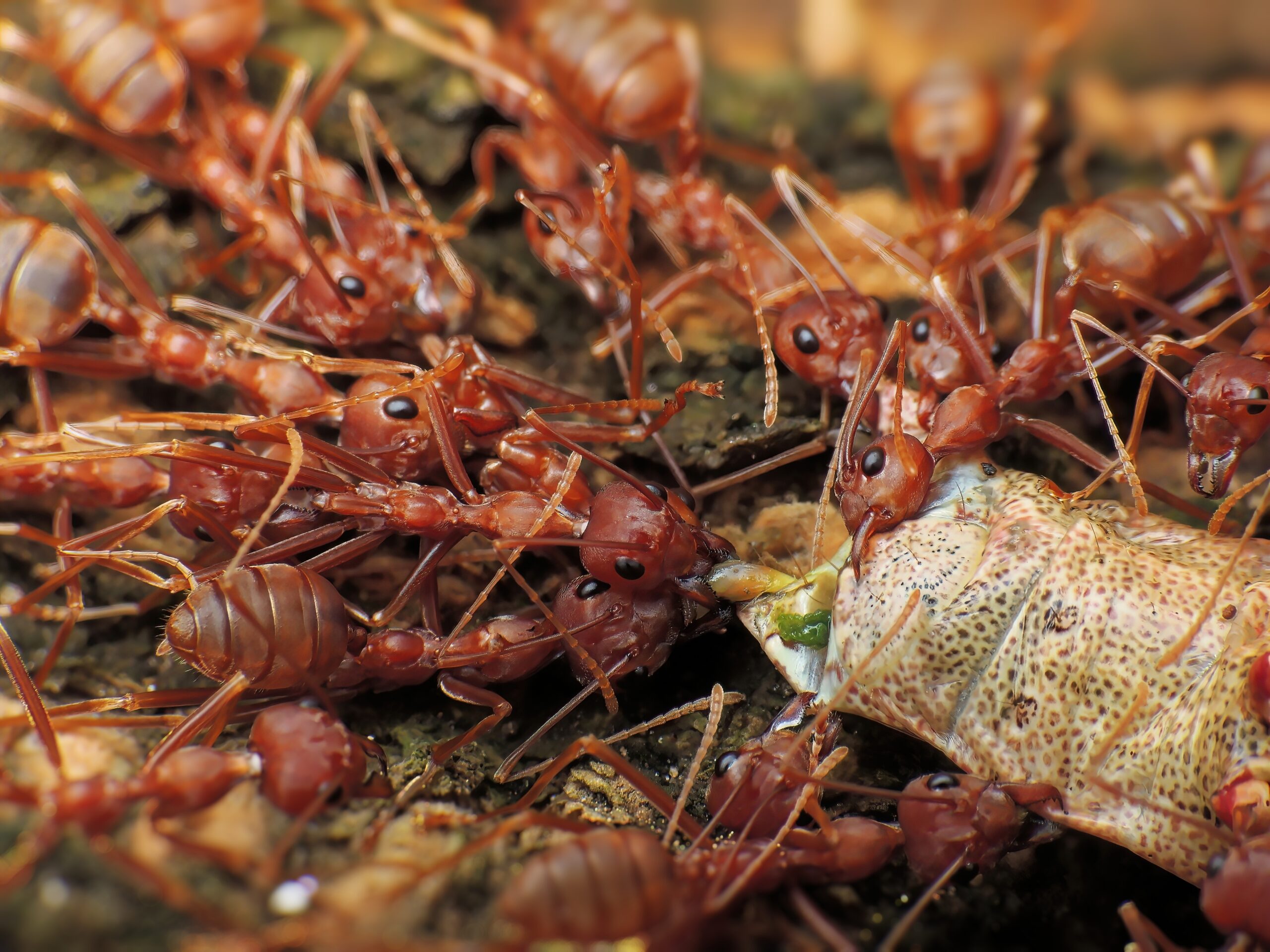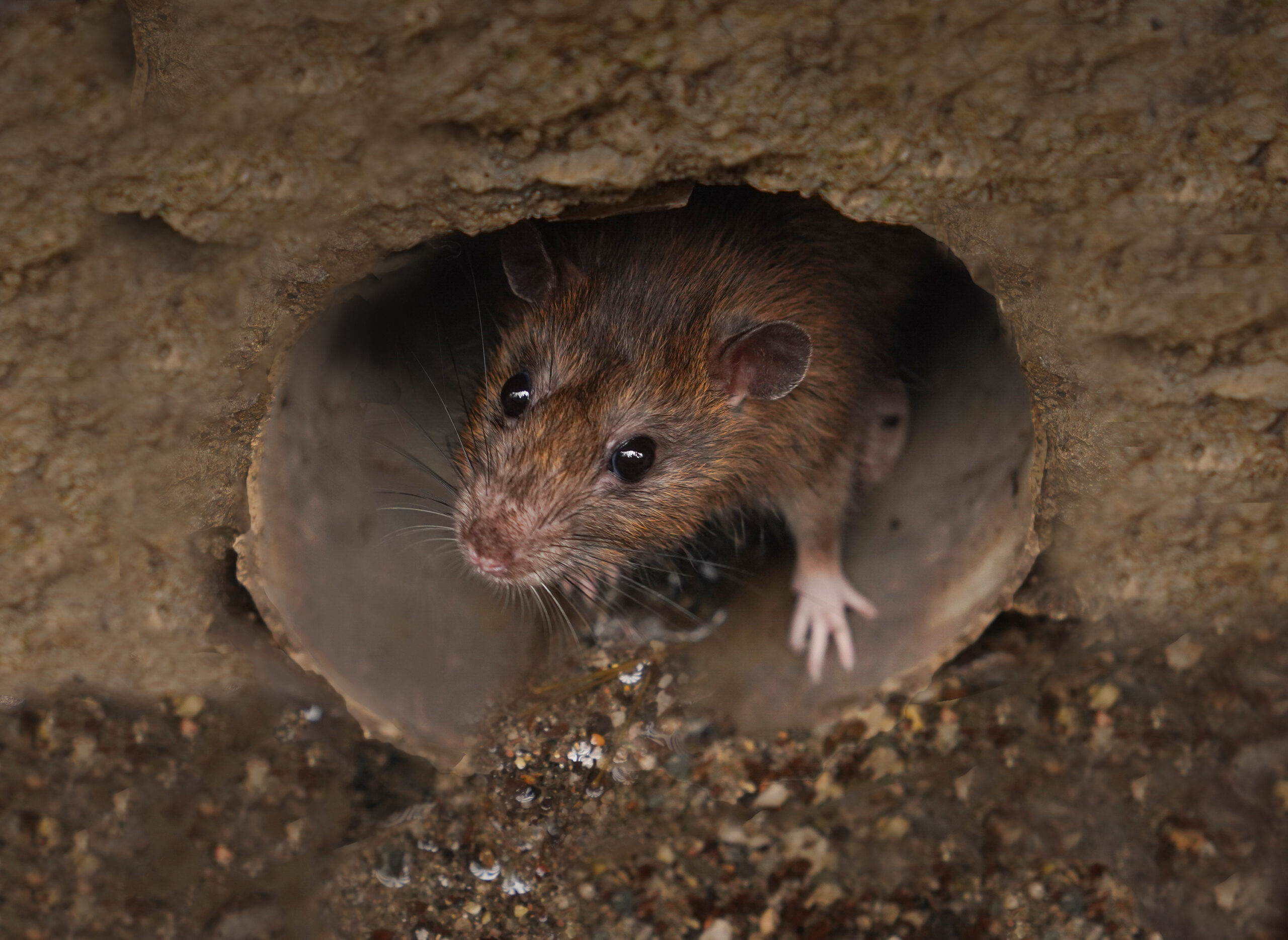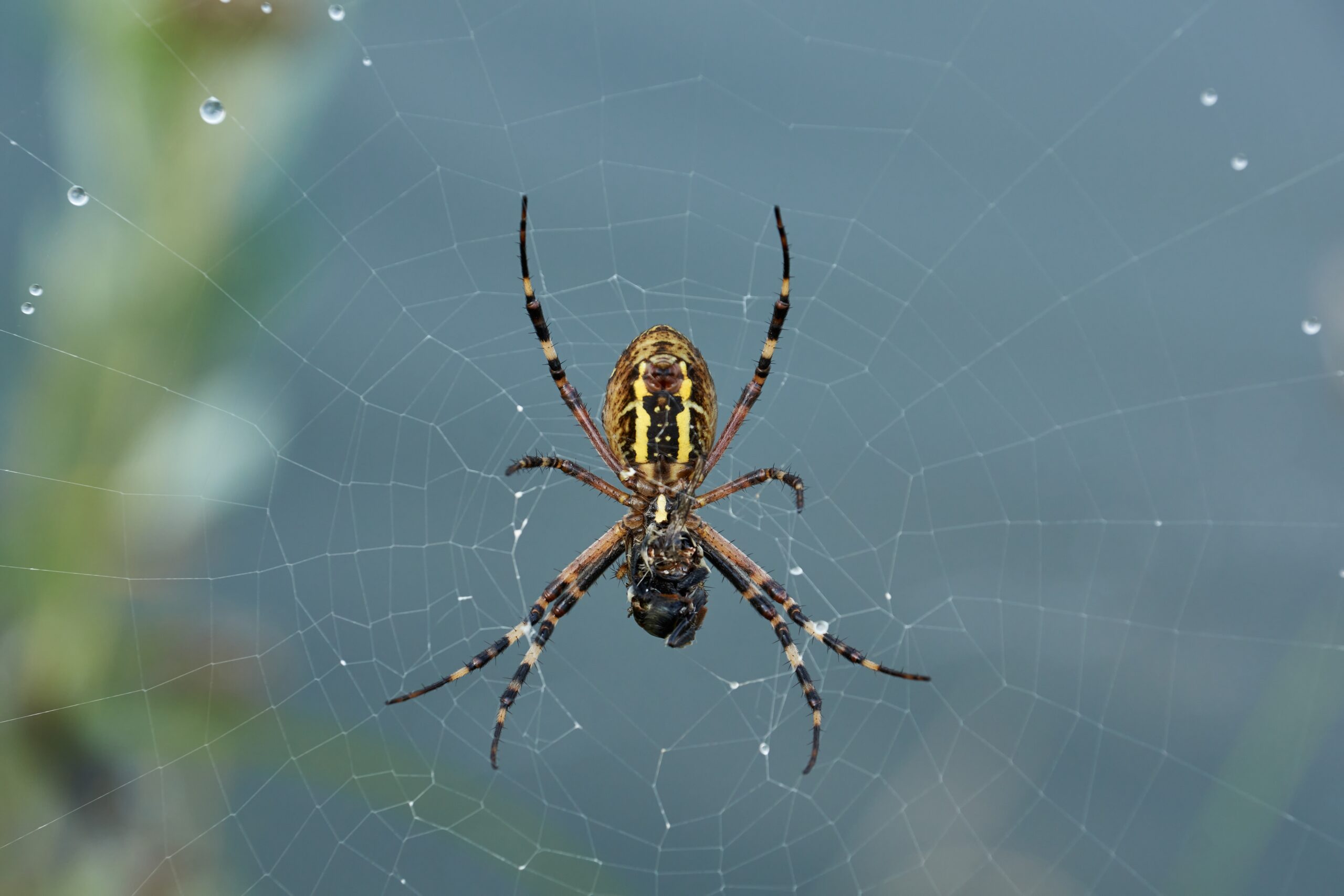Common Pest Tropes in Works of Fiction – Part 1
Common Pest Tropes in Works of Fiction – Part 1
When we think of pests in everyday life, the words “disgusting” and “annoying” often come to mind. But this is not always the case in certain fictional works, some of which paint the critters in a much more appealing light. The role that pest species play in books, movies, and television shows is usually not pondered much after the story ends. However, when taking a look at the many appearances of these creatures across a broad spectrum of stories, there are common tropes that become apparent. In media, a trope is an important recurring theme or trend that can be shared between genres and specific stories. Let’s take a brief look at a few popular tropes for three pest species, as well as specific fictional works that use these tropes in different ways. Make sure to return next week for part 2 to see which pests we cover next!
Ants

In reality, ants are one of the most common pests in the world. There are about 12,000 species that all share similar core traits, like living in a colony with a queen and using pheromones to guide their fellow workers to a reliable food source. Their hardworking nature and massive colonies are the most common traits utilized in stories that feature these eusocial insects, but there is often a hint of exaggeration when it comes to depicting the industrial nature of ants.
Helpers: This trope intentionally paints ants in a positive light that makes them far more appealing than usual. Certain stories – usually in children’s entertainment – depict ants as friendly insects that will lend a helping hand to anyone they come across. They can also come off as more human-like than insect-like, especially in their interactions with their own colony or with humans. Perhaps the best example of this trope is in the animated A Bug’s Life, where Flik and his fellow ants walk and talk like humans but still have the ingenuity of ants. An example where the ants aren’t sentient and do not talk is in the Ant-Man movies, where they all have their own skills that Hank and Scott utilize to assist Ant-Man in his quests to save the world. In fictional worlds with this trope, ants are made to be friendlier and more likable than they ever truly are.
Work Ethic: The trope of ants being incredibly hardworking and efficient is arguably the most true-to-life of them all. The fictional ants will show incomparable teamwork as they work towards whatever goal is being used in the plot, and their intelligence is more fitting for a fantasy than for an everyday group of insects. A classic example of strong ants that never stop working is the classic The Atom Ant Show. This 1960s cartoon depicted the titular superhero Atom Ant, who fights crime while using his tiny size and impressive strength to his advantage. He may look more like a fun mascot than like an ant and does not live in a typical anthill, but Atom Ant does his species some good by making ants seem like the superior insects.
Massive Army: Ant colonies can number in the millions, so it’s no wonder why this fact is capitalized upon in multiple works of fiction. The writers often show that the reason for a massive ant army rising up is because their nest has been disturbed in some way, which then results in an often horrific defense led by these scrappy insects. This trope usually features an especially dangerous ant species to really heighten the stakes for our heroes. A great (and charmingly exaggerated) example of this is in Indiana Jones and the Kingdom of the Crystal Skull. After Russian officer Spalko’s jeep plows into a giant anthill, countless six-inch-long red ants pile out to consume their enemies. Indy classifies them as Siafu, and the fact that it takes less than a minute for them to carry Dovchenko into their anthill and begin to consume his flesh is enough for us to be thankful that these ants are as fictional as that strange crystal skull.
Rats

More often than not, rats are shown in a bad light throughout fiction. Their features are made to look more evil, usually through the inclusion of glowing eyes, sharp claws, and a bad attitude. But the opposite is also true, as there are plenty of examples of cute-ified rats in animated movies and shows (just look at Ratatouille). They can be friend or foe to the protagonists in order to further the plot, as well as simple pests that exist just to get a visceral reaction out of the audience when the hordes of rodents appear on screen.
Cellmates: There are plenty of tales that use this trope in either charming or creepy ways, but they all seem to unanimously stem from a point of loneliness. Who is the perfect companion for a character imprisoned in isolation for years? A rodent, of course! Many stories that utilize this trope are animated, which allows the artists to make the rats either more likable or more sinister, depending on the mood. A recent example of this is Encanto, where Bruno’s constant companions are loyal rats that will put on shows for the shunned future-teller to simultaneously keep him company and distract him from his heartbreaking exile.
Resourceful Rodents: Similar to ants, rats can be depicted as being quite the hardworking, resourceful pests. Their actual intelligence and ingenuity are often highlighted in fiction to give us the typical cunning, stealthy rats we know all too well from dozens of stories. Ratatouille depicts this the best, as it features rodents accomplishing all kinds of wild endeavors through the power of teamwork and critical thinking. The acts of perfecting French dishes, using household objects to escape a defensive elderly woman, and tying up a health inspector and villainous chef are all ways that this trope is used to the extreme.
Sewer Swarm: An easy way to immediately turn the presence of rats into a nightmare is by capitalizing on two aspects: location and quantity. When endless hordes of rats are in an appalling setting, especially if human characters are also trapped there in some way, it is an extremely threatening scenario that very few would ever wish to be in one day. And that’s just scratching the surface; it gets much worse when you thunk about the accumulation of bacteria and diseases that fester within the scurrying rats. This may have been what was going through Indy and Elsa’s minds when they found themselves exploring rat-infested catacombs in Indiana Jones and The Last Crusade. At least those rats didn’t cause them any problems until they had to hide under an overturned sarcophagus in the petroleum water later on.
Boss Battle: In reality, rats are quicker to fight than mice; the larger rodents will bite and scratch in defense while the smaller ones would rather run. This fact is used in combination with some creepy character design to create the trope of a villainous rat that needs to be defeated by a hero. Whether they speak or not, these fictional rats are ready to fight by using their sharp teeth and large size to their advantage. One example of this is in The Nutcracker, where the Rat King can look very nightmarish depending on the version that you watch or read. But much of his aggression is in his attitude, as opposed to another example in Lady and the Tramp. Tramp has to fight off the most sinister-looking rat ever when he finds the rodent next to the Darling baby’s crib, and the mutt thankfully prevails over the evil rat and its sharp teeth and claws.
Spiders

Of the three pests on this list, spiders may subjectively be the most polarizing in both real life and fiction. Some people don’t mind them due to spiders’ general laid-back demeanor, while others have arachnophobia and therefore would prefer to never see spiders in either reality or fiction. It’s easy to make spiders even creepier than usual – they already have too many eyes and legs for our liking – which explains the abundance of works in which they are the monstrous enemies of the human main characters.
Trappers: Although not every actual spider can spin a web, the fictional ones seem to have no problem creating these sticky traps at all. Some fictional spiders accidentally tangle a human up in its webs when the character stumbles into the arachnid’s home. But other spiders are evil and intentionally tie up creatures much larger than them with their impressively-strong strands. The common result is the human or animal requiring help to escape the webs, especially if the spider has returned to feast upon their filling meal. A much more tame example of this trope is again in A Bug’s Life, where Rosie the black widow ties up PT Flea. Contrary to her name, she has no interest in feeding on the captive flea, and is simply using her ability to help the group.
Looks are Deceiving: Of course, every scary animal needs a fictional appearance where they are much friendlier and more appealing than normal. The spiders in this trope can look creepier or just as creepy as they do in real life, but the necessary twist is that the fictional arachnid is immediately likable. Possibly the most popular example is Charlotte from Charlotte’s Web, as she has the looks of a normal barn spider with the lovable personality of a maternal figure. Another friendly spider is in a smaller role, but it fulfills the trope in an efficient way. In Madagascar, a spider slowly creeps up on Alex the lion until she happily greets him and humorously terrifies him. When it comes to kind animated spiders, it is important to never judge a book by its cover (or a spider by its chilling looks)!
Arachnophobia: The intense fear of spiders is definitely capitalized on in stories of all genres, as it is a surefire way to inject some fear from the audience into the experience. When the characters show their own fear of whatever spiders they are near, it adds some vulnerability that makes them believable as characters. It is also a true triumph when they work through their fear in order to accomplish the goal at hand. The famous first sequence of Indiana Jones and the Raiders of the Lost Ark shows this when Indy and Satipo stumble into some giant cobwebs, and Satipo has to allow Indy to brush the numerous tarantulas off his back before they continue. One of the unique traps that Kevin sets in Home Alone results in Marv the burglar having the pet tarantula on his face, screaming to no end as he gets up close and personal with the furry arachnid.
High-Quality Pest Control – Pointe
As demonstrated in these examples of common tropes, we see different sides of common pests. Sometimes they’re likable and personified, other times they are the antagonists of the main characters. But no matter how these critters behave in fictional worlds, we know for certain that they are never actually welcome in our homes. That is why the experienced technicians of Pointe Pest Control are here to help year-round! We provide both preventative and responsive services in every season with the goal of keeping our clients pest-free through our effective treatments. Contact us to learn more about how we can keep your home or business free of troublemaking pests that always seem to be acting their worst in real life.
***Disclaimer: Section 107 of the United States Copyright Act recognizes “fair use” copywriter content as such: “Notwithstanding the provisions of sections 106 and 106A, the fair use of a copyrighted work, including such use by reproduction in copies or phono-records or by any other means specified by that section, for proposes such as criticism, comment, news reporting, teaching, scholarship, or research, is not an infringement of copyright.” This blog post may contain certain copyrighted works and characters that were not specifically authorized to be used by the copyrighted holder(s), however, the content on this post qualifies as “commentary” on the copyrighted works under the “fair use” doctrine of the U.S. Copyright Act and is thereby protected by federal law. Furthermore, we do not claim any ownership or creative rights of any characters on this list, and all rights outside of the fair use doctrine belong to the respective owner(s).
Citations
Magnoli, A. (2008, May 6). The lost journal of Indiana Jones. Gallery Books.
Rat. (n.d.). Indiana Jones Wiki. Retrieved March 23, 2023, from https://indianajones.fandom.com/wiki/Rat
Siafu. (n.d.). Indiana Jones Wiki. Retrieved March 23, 2023, from https://indianajones.fandom.com/wiki/Siafu
Tarantula. (n.d.). Indiana Jones Wiki. Retrieved March 23, 2023, from https://indianajones.fandom.com/wiki/Tarantula
Venetian catacombs. (n.d.). Indiana Jones Wiki. Retrieved March 23, 2023, from https://indianajones.fandom.com/wiki/Venetian_catacombs
Request a Free Quote Today
(We do not share your data with anybody, and only use it for its intended purpose)
